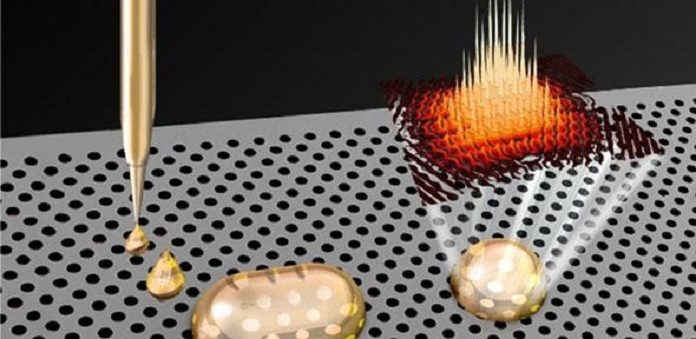Scientists at the University of Cambridge in collaboration with the Hitachi Cambridge Laboratory have developed a microscopic pen that can potentially write structures to trap and harness light via printing technique. In other words, scientists have combined high-resolution inkjet printing with nanophotonics.
Inkjet printing can be used to print very small devices, using a range of printable materials, including living cells, as ‘ink’. This very basic technology, currently available in many of our home has wide applications including electronics, biotechnology, etc.
Co-first author Dr. Vincenzo Pecunia said, “Most inkjet printers push the ink through the nozzle by heating or applying pressure, producing ink droplets about the size of the diameter of a human hair.”
Scientists here mainly enlighten printable optoelectronic materials for a range of applications. They even acquired a printer based on electrohydrodynamic jets. The printer applies a voltage to the ink and provides enough force to push it through a much smaller nozzle. Thus, it produces ultra-small ink droplets– ten to a hundred times smaller than those produced by conventional printers.
Pecunia said, “Previous efforts to combine these two areas had bumped into the limitations of conventional inkjet printing technology, which cannot directly deposit anything small enough to be comparable to the wavelength of light. But through electrodynamic inkjet printing, we’ve been able to move beyond these limitations.”
Scientists deposited ultra-small ink droplets onto photonic crystals, where ink droplets were drawn on small crystals via a very fine pen. These droplets can even change the properties of the crystals so that light could be trapped.
Through this technique, scientists were able to create many types of patterns onto the photonic crystals, at high speed, and over a large area.
Dr. Frederic Brossard from the Hitachi Cambridge Laboratory said, “This fabrication technique opens the door for diverse opportunities in fundamental and applied sciences. A potential direction is the creation of a high density of highly sensitive sensors to detect minute amounts of biomolecules such as viruses or cancer cells.”
“This could also be a very useful tool to study some fundamental phenomena requiring very strong interaction between light and matter in new materials and create lasers on demand. Finally, this technology could also enable the creation of highly compact optical circuits which would guide the light and which could be modified by inkjet printing using the photonic crystal template.”
